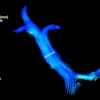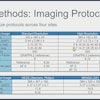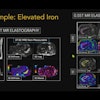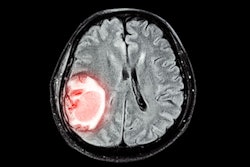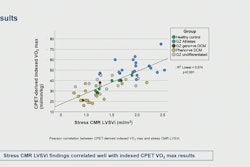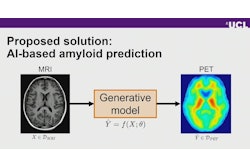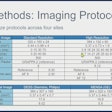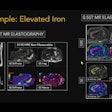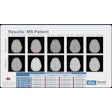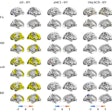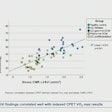Analysis using MR spectroscopy has found that repeated higher impact hits during a single football season are associated with notable neurochemistry changes in the brain prior to a diagnosed concussion, according to Young Investigator research presented May 12 at the International Society for Magnetic Resonance in Medicine (ISMRM) 2025 meeting in Honolulu.
A team led by Zexuan Liu, PhD, from the department of biomedical engineering at Georgia Institute of Technology and Emory University in Atlanta, studied 215 male American football players around 16 years old, pre- through postseason football, to capture their brain metabolite concentrations in relation to the range of g-force hits they experienced.
The work is important because it is unclear what role repeated asymptomatic impacts play in head impacts that lead up to a concussion, Liu explained.
"We heavily rely on symptom presentation and lack quantitative measures to understand the neurological process in these injuries," Liu said. CT often does not detect concussion and smaller injuries, and MRI is not typical standard of care for concussion.
To better understand neurochemistry changes after repeated hits, all head impacts for each participant were recorded across a single season in 2018 using an accelerometer affixed below each participant’s left mastoid and a hit-and-run filter.
The study was part of a larger prospective controlled clinical trial for a protective jugular vein compression (JVC) collar. The primary goal of the trial was to evaluate the efficacy of wearing the JVC collar in preserving longitudinal diffusion tensor imaging metrics, relative to the recorded head impacts in a large cohort.
Proton MR spectroscopy (MRS) and injury, motor, and cognitive assessments were part of the secondary outcomes, Liu noted.
"We wanted to quantify relationships between brain metabolites and head impacts as a function of concussion, collar wear, and time," Liu said, noting that the imaging protocol for MRS was limited to single-voxel spectroscopy due to time constraints, with metabolite quantification in the primary motor cortex (M1) and anterior cingulate cortex (ACC) for their proximity to head-on collision sites.
Liu noted four metabolites of interest:
- N-acetylaspartate (NAA), associated with neuronal integrity
- Choline (Cho), related to membrane turnover and cell proliferation, and creatine (CR)
- Myo-inositol (myoI), an osmolyte linked to glial cell growth and neuroinflammation
- Glutamate and glutamine (Glx), associated with immune modulation and neurotransmission, respectively
Liu's team acquired single-voxel hydrogen-1 (H-1) MRS data from the scans of participants (114 in the collar group, 101 in the noncollar group) at preseason, postseason, and after a diagnosed concussion, if applicable, using Philips 3-tesla MR scanners with a 32-channel phased-array head coil.
 Expected outcomes in brain metabolitesZexuan Liu, PhD, ISMRM 2025
Expected outcomes in brain metabolitesZexuan Liu, PhD, ISMRM 2025
Of the four metabolites, Cho emerged as the key metric of injury in the anterior cingulate cortex, for concussion in participants with head impacts above 80 g, analysis found. The relationships between total choline at both M1 and ACC, and mean g-force, varied significantly between the concussion group and the no concussion group for higher impact magnitudes between the > 80 g and > 140 g thresholds, Liu added.
This suggests that "total choline may be a key outcome metric for concussion in athletes with repeated head impacts leading up to an injury; and in concussed athletes, those who continuously experience high impact magnitudes may potentially express a higher level of cell proliferation and membrane turnover," Liu said. However, "it is clear that total choline, or mean g-force alone, is not enough to describe injury from repeated impacts," Liu said.
In addition, the analysis found relationships between myo-inositol at ACC and mean g-force differed significantly between the collared and noncollared group. The team observed a negative correlation in the collared group for higher g-force magnitudes between 110 g and 120 g, suggesting there may be a potential reduction of neuroinflammation in the presence of the collar, Liu added.
The team also did not see any variations in total NAA in this study. It is possible that the changes in NAA in young athletes are too small to detect, and NAA may be less sensitive to injuries in younger athletes, Liu said.
"Our findings support the continued use of proton MRS as a quantitative neuroimaging metric in athletes who are adolescents and experiencing repeated head impacts leading up to injury when other imaging findings are negative," Liu concluded. "MRS has the potential to be an additional tool for diagnosing and prognosing mild brain injury."
Check out AuntMinnie’s full coverage of ISMRM 2025 here.

